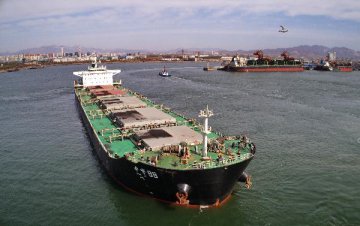It may be time for investors to stop worrying and learn to love the boom. The inevitable bust could be further off than is commonly believed, but it could also be more painful.
The U.S. economic expansion that started after the global financial crisis is now 10 years old and in July it would become the country’s longest on record. Crossing the decade mark makes many analysts and policy makers think that the end of the expansion must be near. Nonetheless, there is little indication that the U.S. economy is in imminent danger of falling into recession.
True, May’s employment data came in weak, with the economy adding just 75,000 jobs, well below expectations. President Trump’s threat of unleashing a full-blown trade war with China has also brought on a bout of volatility in stocks—the S&P 500 fell nearly 7% from the end of April through June 3. If the administration follows through with broad-based tariffs on Mexico, it could bring near-term chaos to corporate supply chains and more market selloffs.
Yet at the same time, there are real indications that the economy is less beholden to traditional cycles than it used to be. Instead, debt may have taken the starring role. This will eventually spell trouble—but possibly not for a good few years.
When economists talk of the “business cycle,” they usually refer to ebbs and flows in gross domestic product. These swings are often thought to be the result of companies overestimating their future sales by investing too much and then going through a period of cutting costs that leads to lower output growth and employment. Business cycles have historically happened at intervals of between five and eight years, so the current expansion is indeed an abnormally long one.
However, these business cycles are themselves contained within longer ones, which economists call “financial cycles.” Those have lasted on average from 13 to 18 years and are the result of companies and households taking on more debt than they can service and being forced into destructive defaults.
This happened during the corporate-debt bubble of the 1980s and again during the subprime-mortgage boom of the mid-2000s. In the latter case, the implosion of a chain of repackaged debt ended up plunging the global economy into a deep recession.
Economists have long struggled to separate the two types of cycles. Back in 2003, University of Chicago professor Robert Lucas infamously said in a speech that the “central problem of depression-prevention” had been “solved for many decades.” The worst crisis since the Great Depression struck a few years after those comments.
Yet Mr. Lucas wasn’t totally off the mark. The nature of the business cycle has indeed changed since the 1980s.
Back then, trade and finance were liberalized around the world while policy makers sought to quash inflation by sidelining labor unions, which had a strong hand in pushing wages up in response to other costs—like oil prices—going up. Central banks were given more independent power to fight downturns as the public sector kept getting bigger.
In the present era, central banks go to extremes to stimulate the economy and reassure markets at the first sign of trouble. They can do so without concern because weak unions and globalized supply chains keep inflation subdued. If growth does falter, governments automatically cushion the blow through the sheer size of the public-sector wage bill as well as unemployment and social benefits.
However, longer expansions also encourage people to take on more debt and they give financial firms time to get around regulations. As another economist, Hyman Minsky, put it: Economic stability breeds instability. The result is that business cycles have become mellower but financial cycles more violent since 1985, according to data by the Bank for International Settlements.
The end of the current financial cycle doesn’t seem imminent. Debt loads in the private sector aren’t small, but remain far from peaks. House prices—a key financial indicator—look far more reasonable than in 2008 when compared to the rental income they generate.
To be sure, China’s structural slowdown is a real danger, and if it gets worse it could definitely trigger a small downturn in the U.S. and Europe. But if the business cycle truly is getting stretched, the expansion could last a few more years. This suggests investors should continue to buy stock-market dips—a successful strategy for the past 10 years.
Yet none of this means there won’t be another financial catastrophe down the road. Each one happens in a different way, and risks are building.
One example: Investors have sought to escape low returns in public markets by piling into private assets like leveraged loans and direct lending. Fundraising for private markets was at an all-time high of $5 trillion in 2018—double what it was 10 years before, according to data firm Preqin. Risk from these illiquid assets is being concentrated not in banks but in asset managers.
Investors should stop obsessing about an imminent recession but start planning for a financial storm some time in the mid-2020s.
Source: The Wall Street Journal























Latest comments